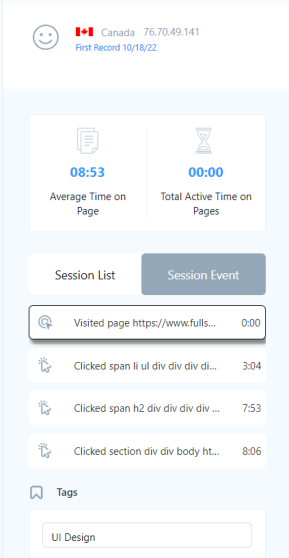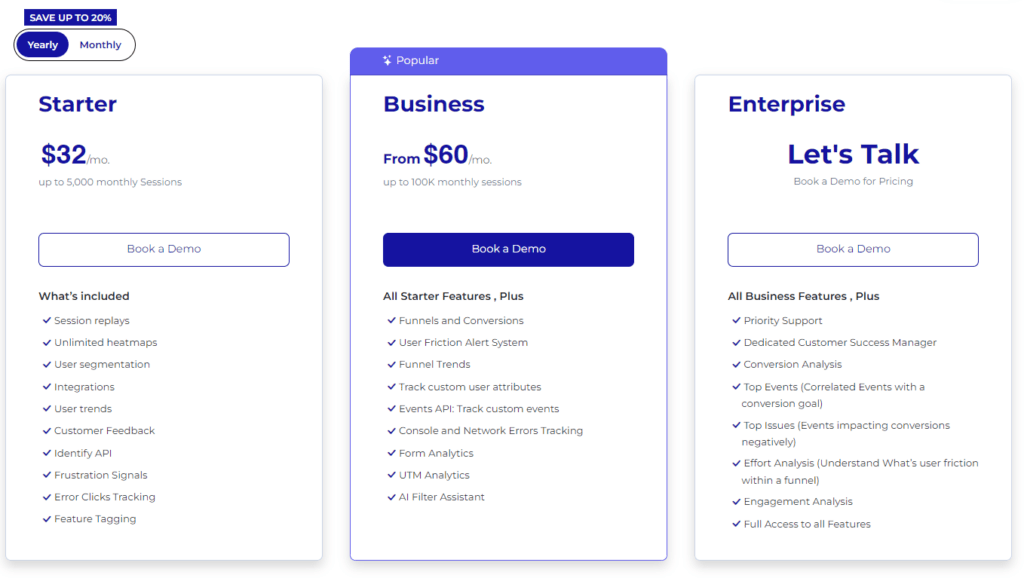Are you looking to optimize your website's performance but unsure if VWO is the right choice? You're in luck! We've compiled...

What is Behavioral Targeting and How to Do It Successfully?
Successful businesses should always seek innovative strategies to connect with their target audience effectively. One such approach popular in recent years is behavioral targeting. This method involves the analysis of online user behavior to deliver personalized content and advertisements.
Your audience clicks, and you learn! Gathering data points like fireflies in a jar, lighting up patterns of your customers' interests. Tailored messages that speak to them so personally, it feels like you've read their diaries... only with permission!
In this article, we'll guide you through what is behavioral targeting, why it is so important, and how to do it successfully.
What is Behavioral Targeting?
Behavioral targeting is a strategy that includes analysis of users' online behaviors, enabling you to tailor content and advertisements based on their individual preferences and actions. This approach contrasts with traditional mass marketing, which casts a wide net with generalized messages.
Instead, behavioral targeting uses the wealth of data generated by users as they navigate websites, click on links, make online purchases, and engage with various online content.
Why is Behavioral Targeting Important Nowadays?
You're probably aware that traditional advertising often misses the mark and behavioral targeting becomes a digital marketing savior. It's not about guessing what might tickle your customers' fancy; it's about knowing what does based on their past clicks and scrolls.
If you analyze patterns such as purchase histories and web browsing behavior, you can deliver personalized ads that speak to each individual rather than shouting into a void.
Digital-savvy consumers are no longer impressed by generic pitches. They crave personalized ads that reflect their interests, a kind of digital empathy if you will. And here lies the beauty of behavioral data: it helps craft those relevant ads that lead to improved conversion rates. Let’s face it, we’re more likely to buy something when it feels like it was made just for us.
Behavioral Targeting vs. Contextual Targeting
Everyone has probably experienced contextual targeting without even realizing it. Seeing an ad for dog food on a pet care blog seems logical enough but it doesn't necessarily mean you have a pooch begging for treats back home.
This is where behavioral stands tall over contextual methods as it goes beyond mere relevance to current content; instead digging deep into users' online activities over time.
Personalized ads crafted from rich internet activity insights can boost engagement so much so that six or eight times may be all they need before deciding "Yep, I'm getting this." Remember The Rule of Seven? Well with targeted approaches honed by behavioral insights, these numbers aren’t just rules, they're results waiting to happen.
The Mechanics Behind Successful Behavioral Targeting
If someone is browsing the web, and ads for that quirky gadget they Googled last week keep popping up. Coincidence? Not at all. That's behavioral targeting flexing its muscles, turning your target audience's online behavior into a goldmine when you want to sell your stuff.
But, how to do it? Let's see what this process involves.
Collecting User Data as the First Step
First off, we need user data, and lots of it, to kickstart our journey into targeted advertising. From every click to time spent on pages, these digital breadcrumbs are scooped up faster than free samples at a bakery.
It’s like piecing together a jigsaw puzzle of user profiles; only instead of ending with a scenic landscape, you get detailed insights into consumer behaviors.
This isn't just any old data collection. It's about capturing those moments when users show us their true colors through their browsing behavior and purchase histories. If you leverage this treasure trove using sophisticated data management platforms, you can place behavioral targeting ads so relevant they almost read minds.
Profiling Target Audience Through Their Online Activities
The era of employing a broad approach to attract a diverse audience is a thing of the past. Today's strategy revolves around precision, akin to fishing with customized bait. Profiling comes down to dissecting online activities until distinct audience segments emerge from the sea of users' web browsing patterns.
We don’t just look at the user's web browsing, we dig deeper because context matters. What good is an ad for steak knives if someone is researching vegan recipes?
By sifting through heaps of clicks and scrolls with an eagle eye on contextual clues too, you can deliver messages that resonate more deeply than ever before. Stats show that personalized ads are preferred by 91% of consumers because they make shopping feel less like guesswork and more like destiny unfolding one click at a time.

Advantages of Leveraging Behavioral Data in Advertising
Tapping into behavioral analytics is like unlocking a treasure chest for advertisers. With it, you can boost user engagement and ramp up conversion rates by tailoring your approach to match consumer behaviors.
Enhancing Consumer Experience with Personalization
We've all been there. Scrolling through the web when an ad pops up that feels like it was made just for us. That's no coincidence, it's successful behavioral targeting at work. By collecting nuggets of user data, from what they click on to how long they linger on a page, you can serve personalized ads that hit the mark way more often than traditional advertising ever could.
Getting tailored recommendations based on past purchase histories or browsing behavior makes the online customer experience smoother and frankly, less annoying. This kind of relevant ad experience not only keeps consumers happy but also nudges them closer to making a purchase, hence improving conversion rates multifold.
The beauty here lies in the subtlety. It’s about showing users they're understood without overstepping privacy lines. Crafting ads based on users' interests derived from their web browsing activities means you're providing value while respecting boundaries.
Crafting User Personas for Precision Marketing
The days when 'spray and pray' tactics worked wonders in marketing campaigns are over. Today, precision is key, and creating detailed user personas helps unlock it. Imagine being able to pinpoint exactly who your ideal customer is using demographic info combined with their digital footprints across various management platforms.
It’s like having x-ray vision into consumer habits which lets businesses place behavioral targeting companies right where they need them most.
Digging deep into these insights allows you to create advertising messages that resonate deeply because they’re built around real-life behaviors rather than assumptions. Think of higher click-through rates because every message feels handpicked for each individual recipient. It doesn’t get much better than this.
How to Create Buyer Personas for Behavioral Marketing
Imagine being a detective, but instead of solving crimes, you're decoding the DNA of your ideal customer for your advertising campaign. That's what crafting buyer personas is all about, piecing together clues from demographic and psychographic data to nail down who really wants what you’re selling.
Using On-page Surveys to Understand Your Audience
Ever wish customers would just tell you straight up what they want? Enter on-page surveys. They’re like having a chat with your site visitors without needing to bring them coffee. These interactive quizzes can reveal important information about consumer preferences that are more telling than basic analytics could ever dream of being.
You'll learn stuff that goes beyond age or location. You'll get the scoop on their pain points, desires, and even hobbies. Now, you've got yourself one fine-looking persona sketch.
Conduct Customer Interviews for In-depth Insights
If on-page surveys are first dates, then customer interviews are those deep conversations at 2 AM that leave an impression long after they've ended. By engaging in one-on-one dialogues, we dive deeper into the minds of our consumers.
We aren’t talking small talk here; these interviews allow us to construct comprehensive profiles packed with insights no algorithm could guess, like why someone prefers eco-friendly products or splurges online post-breakup (it happens).
Digital marketing can sometimes feel like shouting into the void, but not when armed with killer buyer personas crafted from rich layers of behavioral insights. When done right, ads become less "Hey buy this." and more "I totally get you."
Personalized ads based on actual interests lead users down paths lined with relevant content rather than annoying dead ends filled with irrelevance. That's successful behavioral targeting doing its magic dance toward improved conversion rates.
How to Include Best Practices In Your Behavioral Campaigns
To hit the bullseye with behavioral targeting, it's not just about knowing your target audience; it’s about becoming a mind reader of sorts. You've got to collect relevant data points like you're crafting tips to implement successful campaigns that make competitors weep.
First things first: let’s talk user engagement. Behavioral tracking is all about reading digital body language, the clicks, scrolls, and hovers that tell you what users want even when they don't say it out loud.
By understanding these silent signals through real-time data analysis, you can tailor your ads so well they feel like personal letters from an old friend rather than generic billboards on the information superhighway.
Creating Audience Segments That Stick
Gathering information is crucial in this whole process. When collecting user data, consider it as assembling components for a valuable puzzle. Each piece signifies distinct online behaviors or purchase histories.
Then, with personalized ads derived from web browsing behavior and additional insights like email campaign performance or past brand interactions across various instances, your approach shifts from aimless attempts to targeted precision.
The Art Of Personalized Messaging
Effective messages seem like those carefully wrapped presents under the Christmas tree, capturing attention as they are chosen specifically for your customers. The effectiveness of these messages relies on a deep understanding of consumer behaviors, facilitated by management platforms capable of handling intricate datasets seamlessly.
Insights derived from significant data reveal the potential for higher click-through rates through the integration of highly personalized content at every stage of user engagement within behavioral strategies.
The goal here is to make users feel valued and unique. Who doesn’t love feeling special?
Get FullSession's Behavioral Analytics Tools For a Successful Campaign
To make the whole process more effective, FullSession's robust suite of analytical tools can help with gathering behavioral data. Designed to decode user interactions seamlessly, FullSession provides a comprehensive arsenal to enhance your behavioral targeting strategies:
- Session recordings: This tool helps you gain valuable insights by replaying user sessions, so you can witness firsthand how visitors navigate your website. Now you will see the pain points, user preferences, and areas of improvement and refine your targeting approach.
- Interactive heatmaps: Heatmaps let you visualize user engagement patterns. This tool highlights the hotspots and cold zones on your website. Once you know where users concentrate their attention, you can strategically place targeted content for maximum impact.
- Funnel and conversions: FullSession's tools also allow you to map out user journeys, from the initial interaction to conversion. Identify drop-off points, optimize conversion paths, and tailor your messaging at each stage to guide users seamlessly through the conversion funnel.
Start Behavioral Targeting With FullSession
It takes less than 5 minutes to start your behavioral targeting campaign with FullSession, and it's completely free!
FullSession Pricing Plans

Here are more details on each plan.
- The Starter plan costs $39/month or $32/year and allows you to monitor up to 5,000 monthly sessions with up to 6 months of data storage.
- The Business plan costs $75/month or $60/year and helps you to track and analyze up to 100,000 monthly sessions with up to 12 months of data storage.
- The Enterprise plan has custom pricing and offers customizable sessions plus full access to all features.
FAQs in Relation to Behavioral Targeting
What is an example of behavioral targeting?
An ad for running shoes pops up because you've been looking at fitness articles and race schedules lately.
What is behavioral advertising?
Behavioral advertising targets ads based on your browsing history, clicks, and online habits to show relevant offers.
What is behavioral targeting vs contextual targeting?
Behavioral hones in on user activity; contextual focuses solely on the content of the page being viewed.
What is targeting in consumer behavior?
Aiming marketing efforts at specific groups based on their purchasing actions, preferences, and habits hits the mark every time.




